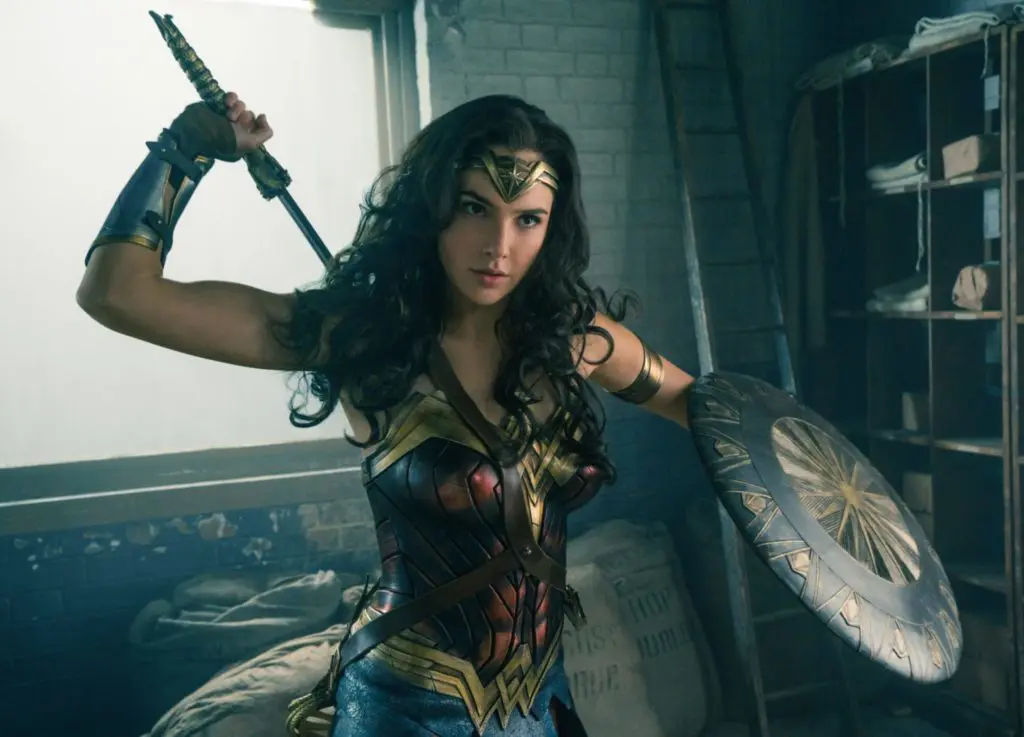Wonder what visual effects made the comic book superhero Wonder Woman film so wonderful? Let us at the DAVE School count the $103,000,000 ways. That was the weekend haul domestic box office opening for the first female-fronted superhero movie in over a decade. Directed by Patty Jenkins, this film promises to become a smash hit franchise.
Written by Renee Dunlop
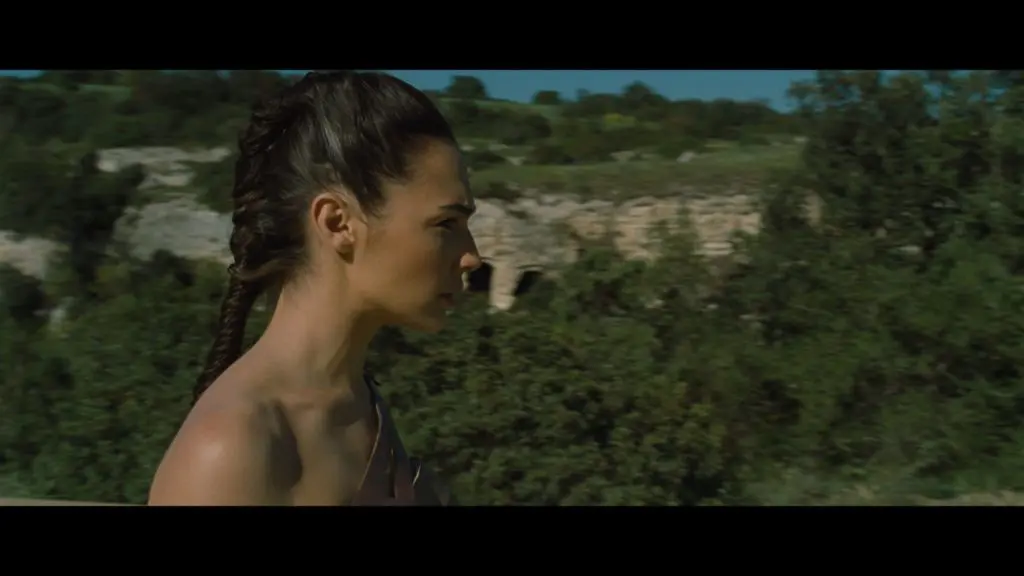

Wonder what VFX made the comic book superhero Wonder Woman film so wonderful? Let us at the DAVE School count the $103,000,000 ways. That was the weekend haul domestic box office opening for the first female-fronted superhero movie in over a decade. Directed by Patty Jenkins, this film promises to become a smash hit franchise.
Under Visual Effects supervisor Bill Westenhofer, the roughly 1,800 visual effects shots were distributed among visual effects houses MPC, Double Negative, Pixomondo, UPP, Platige and Weta, with MPC and Double Negative handling the bulk of the work. MPC completed 500 of those shots under another wonderful woman, MPC’s 20-year veteran, VFX Supervisor Jessica Norman, who started her career as a receptionist and worked her way up to this blockbuster film.
The MPC team used a combination of tools such as Maya, Nuke, Zbrush, Houdini, Renderman and MPC’s proprietary in-house destruction tool Kali. They worked on the opening act beach battle, No Mans Land and the Veld town sequences. Their list of visual effects contributions included hero digital characters, a hero build of Wonder Woman in two different costumes, environment extensions, crowd and destruction simulations and developed new controls for hair simulations. Artists also built hero Antiope, Hippolyta, nine Amazonian warriors, horses and four German soldiers in two costumes, a variety of props and weapons.
MPC (along with Double Negative and Weta) also created Wonder Woman’s glowing lasso which was hand animated, with additional simulations created by the technical animation team. The lasso couldn’t behave like a simple cowboy lariat, it had to be animated to arc and tie around things with a flick of her wrist. To create a lighting reference, an LED rope was used during filming that cast a glow on Wonder Woman’s costume.

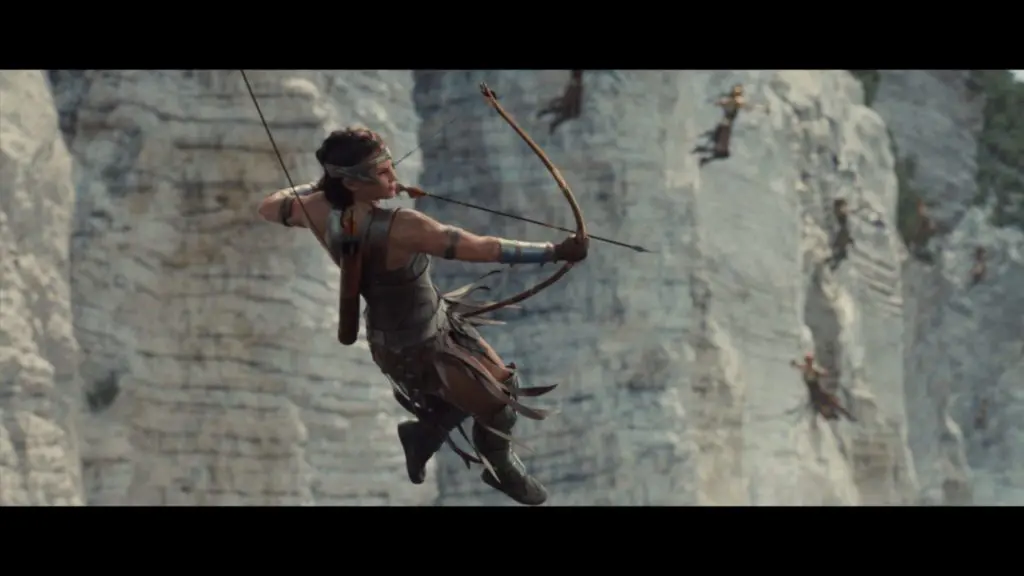

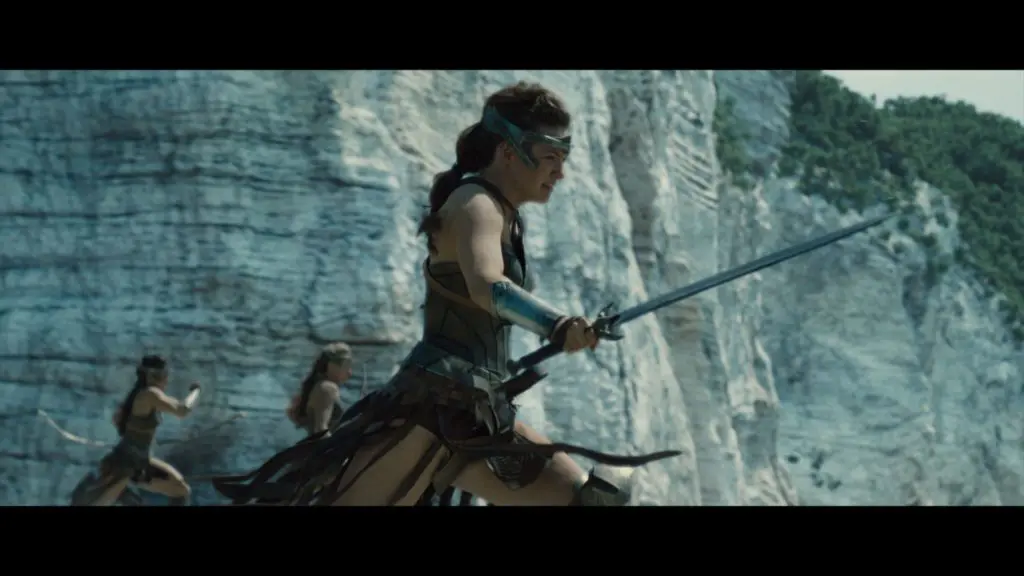
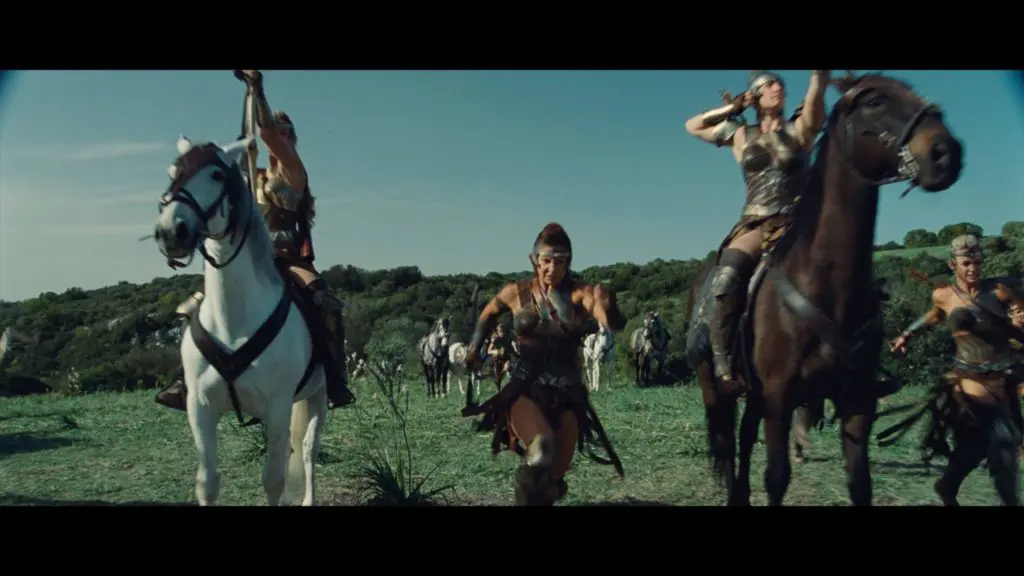

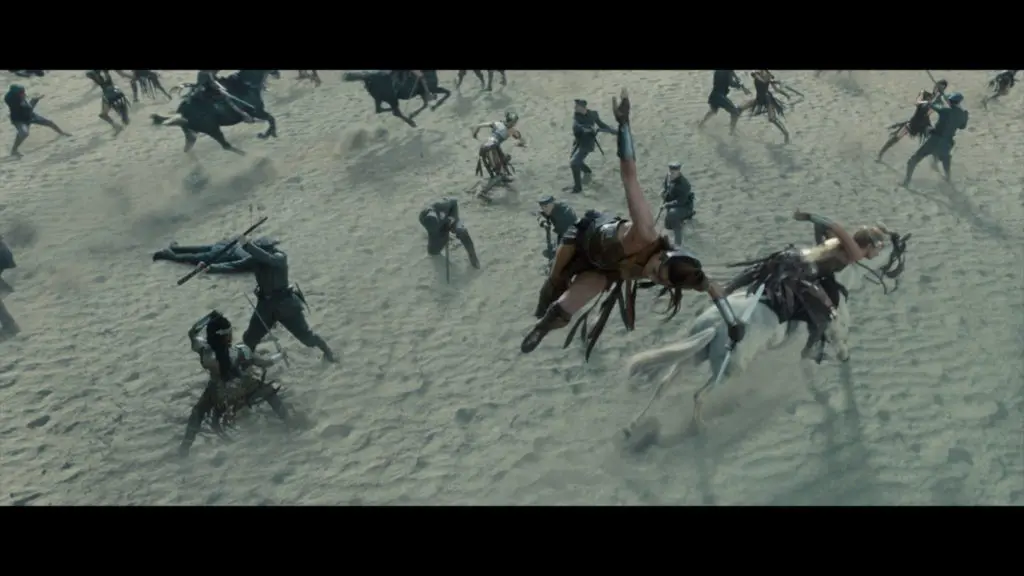
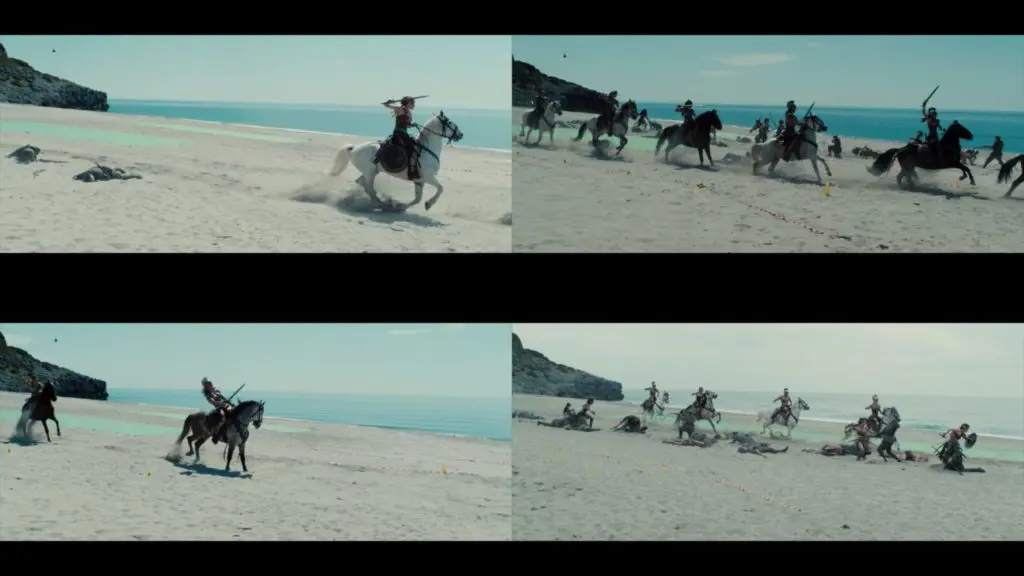
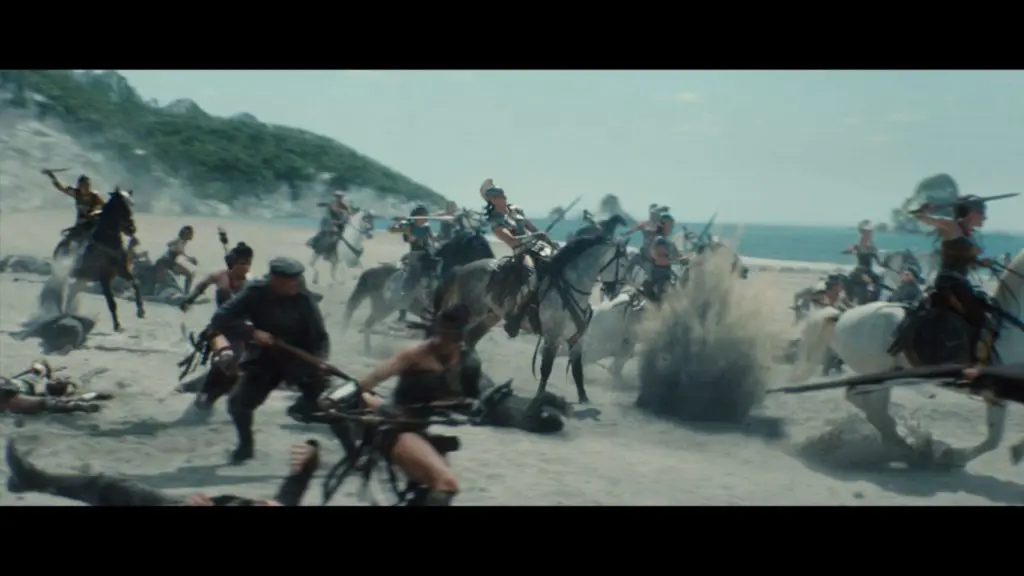
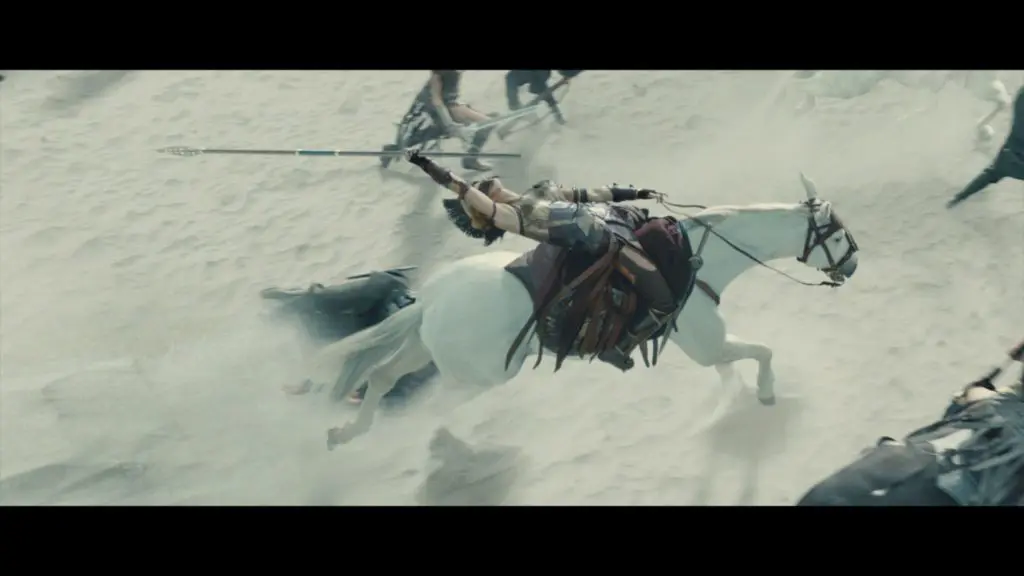
The beach battle sequence was shot on the west coast of Italy. A shoot team was sent to gather reference photos and cliff textures at Vignanotica Beach and along east the coast of Italy. That reference material was used by MPC’s environment artists to digitally extend the beach and add cliff backdrops, and MPC’s lighting team lit and rendered the cliffs and islands, adding DMP touch ups. MPC’s concept art team designed the protective barrier that surrounds Themyscira, sourcing references of light, color, refractions, and diamonds. The multiple layers of FX simulations and animated, distorted surfaces were combined in compositing.
The battle was handled through a collaboration of MPC’s crowd and animation teams. Choreographed by the stunt team, motion capture reference material was shot at MPC London. This was used to create the CG crowd to extend the fighting action between the Germans and Amazonians. In addition, a few key shots of a horse shaped robo moco rig were filmed on greenscreen stages, including hero horses, CG environments, numerous FX layers, crowd fight action and face replacements.
NO MANS LAND

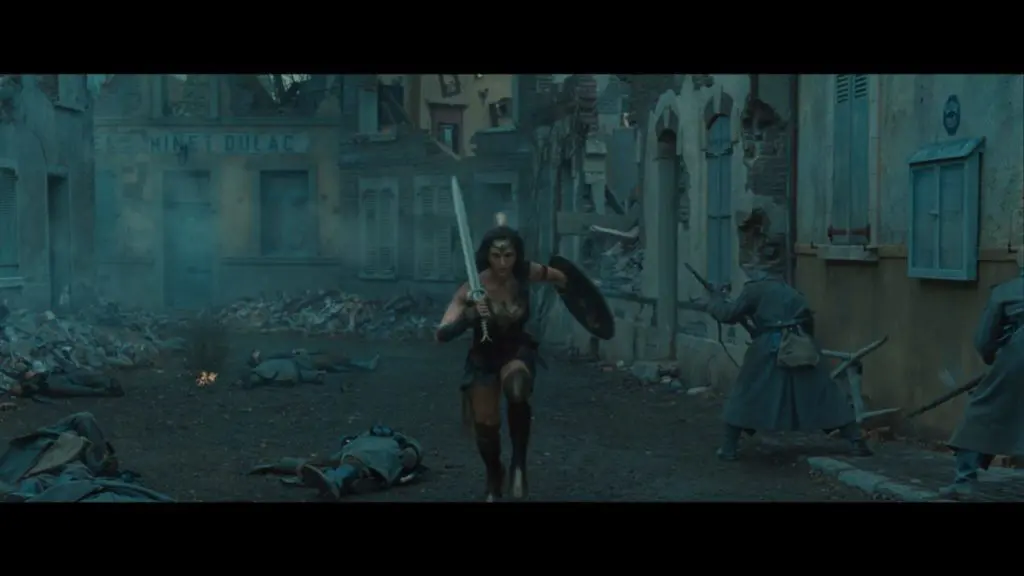
VFX supervisor Bill Westenhofer’s favorite digital effects scene was No Mans Land, where the German and British troops battle it out from their prospective trenches. This third act of the film required greenscreen shots and fully-digital locations to depict Diana and Ares climatic battle scenes. The live action portion was shot at Leavesden Studios in the UK and used for both armies. The art department built a practical muddy trench, then added battle related details. A Spider Cam was suspended to capture the effects of machine gun and sniper fire – and the big reveal of Wonder Woman in her iconic outfit.
The No Mans Land sequence required the most visual effects work. Practical explosions and live action elements enhanced with CG depicted the heat of the battle with tracer fire, sparks and smoke. Using Houdini, MPC’s FX team obliterated a church through layers of digitally generated smoke and debris. Kali, MPCs proprietary tool, was used for a similar destruction of a CG bridge.
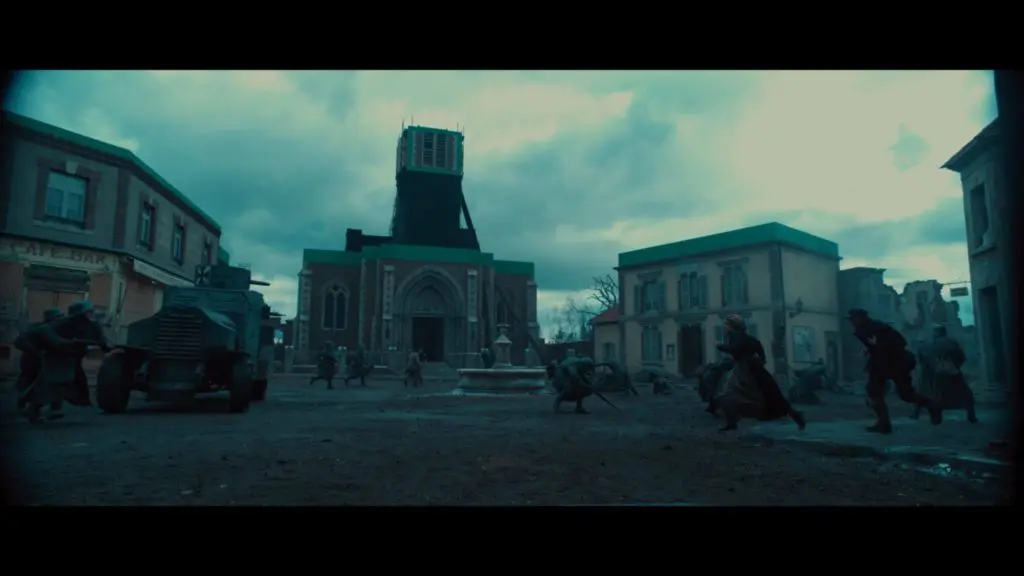

Wonder Woman leaps into battle, destroying German machine gun nests before continuing on to the village after hearing the civilians have been captured by the German army. Several shots used a combination of actress Gal Gadot for the first half that blend into stunt doubles or digi-doubles, depending on what each scene required.
Gadot still did much of the battle scenes herself, which avoided the need to overuse stunt doubles with their faces turned away. Gadot is fairly athletic so was trained to do the fight scenes that were humanly feasible, until digital takeovers would take over for impossible leaps and various battle moves.
The scene of Wonder Woman leaping through the window was handled by MPC. It was originally shot using a stunt double and enhanced with a face replacement, but didn’t quite work the way they wanted. They opted to replace the stunt double with a full digi-double with a face replacement sourcing Gadot’s acting. To accomplish this, Gadot wore facial dots within an array of five Alexa’s and, while watching her own dailies, acted out the various sequences from the movie.

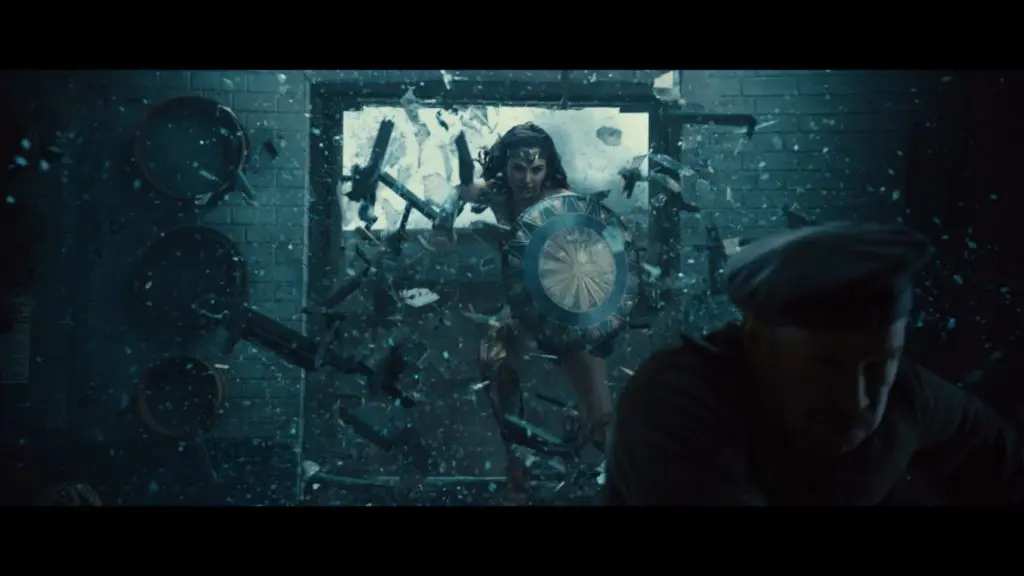
MAN’S LAND NO MORE
It took over 70 years for DC Comics’ Wonder Woman to move from the the pages of a comic book whose launch was in 1918 during the women’s suffrage movement, to this live-action feature film. Any argument to wait further has been obliterated by the undeniable success. In just 34 days this blockbuster tentpole took in $356.7 million domestically, three and a half times the opening weekend haul. According to marketing data analytics firm Movio.co, success was driven by female and older patrons as well as males and children. The average superhero movie draws a 62% male audience while the female and boomer interest grows more slowly. Not this time. The female-male ration nearly achieved parity by week three, even beating out female lead with Daisy Ridley in Star Wars: The Force Awakens at 56-44 male. Wonderful indeed.
LINKS:
The woman behind “Wonder Woman”
Wonder Woman – Final Trailer VFX/grading comparison
WONDER WOMAN: Inside the Visual Effects
Wonder Woman Behind the Scenes(BTS) & Bloopers – Gal Gadot – 2017
Go Behind the Scenes of Wonder Woman [HD] 2017
About The DAVE School
The DAVE School was founded on June 8, 2000 by two Industry executives looking to create #CareerReady artists with a practical animation school. Today, The DAVE School offers specialized training in Visual Effects and Game Production with extensive practice under industry level supervision.
Located on the backlot of Universal Studios Florida® in Orlando, The DAVE School has an 18,000 square foot facility that includes learning and interactive labs, a dedicated Virtual and Real-Time production stage, a Vicon motion capture system, 3D printing and VR/AR labs and secure student access 7 days a week.
NUC University (NUC) is an accredited institution and a member of the Middle States Commission on Higher Education (MSCHE or the Commission) www.msche.org. NUC’s NUC University – IBC Technical Division (NUC-IBC), NUC University – Florida Technical College (NUC-FTC), The Digital Animation & Visual Effects School (The DAVE School), and Hillsboro Aero Academy (HAA) are included in this accreditation. NUC’s accreditation status is Accreditation Reaffirmed. The Commission’s most recent action on the institution’s accreditation status on 2019 was to reaffirm accreditation. MSCHE is recognized by the U.S. Secretary of Education to conduct accreditation and pre-accreditation (candidate status) activities for institutions of higher education including distance, correspondence education, and direct assessment programs offered at those institutions. The Commission’s geographic area of accrediting activities is throughout the United States.
NUC has four additional academic units: NUC University – IBC Technical Division (NUC-IBC), NUC University – Florida Technical College (NUC-FTC), The Digital Animation & Visual Effects School (The DAVE School); and Hillsboro Aero Academy (HAA). Information about NUC, NUC-IBC, NUC-FTC, The DAVE School, and HAA is available at https://nuc.edu/, https://tecnicos.nuc.edu/, https://ftccollege.edu/, https://dave.nuc.edu, and https://flyhaa.com/.


